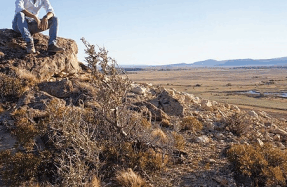
Having once spent a New Year’s Eve in Burgos (see map, p44), I can attest to the Castilla y León region’s harsh climate. I experienced cold that I can only describe as coming from the deepest depths of the very centre of the earth. Once I lost feeling in my feet, the rest of the body followed, and despite copious amounts of excellent red wine, I didn’t fully thaw out until the arrival of spring.
With cold winters, very hot summers and driving winds that rush across the high Meseta Central (central plateau), this vast region in Spain’s northwest experiences an extreme climate that makes life tough for the necessarily hardy Castilians, but also provides some of the best conditions for viticulture in the whole country.
Much in this region is hidden. Bierzo is tucked away in a valley, concealed by the surrounding mountains. Vineyards in the wilds of Salamanca and Arribes are so off-the-beaten track that even the most intrepid of Spanish wine lovers may never reach them. And many of the traditional cellars of Ribera del Duero, Cigales and Arlanza are literally hidden underground in caves, only their chimneys visible above ground.
There has also been a quiet change taking place in the region’s vineyards as winemakers move away from the style of wines created in the 1990s (think big oak, lots of extraction and very ripe fruit) and return to old practices and traditions. This movement has been bubbling away under the surface for a while, but now these wines are really making some noise.
This is not a comprehensive summary of the region – you would need a book, likely several hefty tomes, to capture the rich history and complexity of winemaking here. Instead, this guide points out some of the current trends and key figures in one of Spain’s most exciting wine regions…
WHERE WHITES REIGN
In a region generally dominated by red wine production, DO bucks the trend. About 99% of grapes are white, with 88% of the vineyard area made up of Verdejo,




